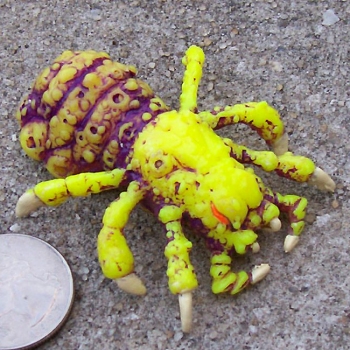| Rubber Bug Collecting: Parasites |
Despite the inherent coolness of their alien appearance and gruesome lifestyle, parasitic
arthropods are very hard to come by in toy form. In the real world, they come in a
mind-boggling variety. Everyone is familiar with fleas, ticks and lice, but how many have
heard of the wingless flies that dwell in the fur of bats, or the minute earwigs that infest
giant African rats? Though they range from insect to arachnid and beyond, I'll be using this
page to document all of my parasite toys, the majority of which come from the same set.
arthropods are very hard to come by in toy form. In the real world, they come in a
mind-boggling variety. Everyone is familiar with fleas, ticks and lice, but how many have
heard of the wingless flies that dwell in the fur of bats, or the minute earwigs that infest
giant African rats? Though they range from insect to arachnid and beyond, I'll be using this
page to document all of my parasite toys, the majority of which come from the same set.
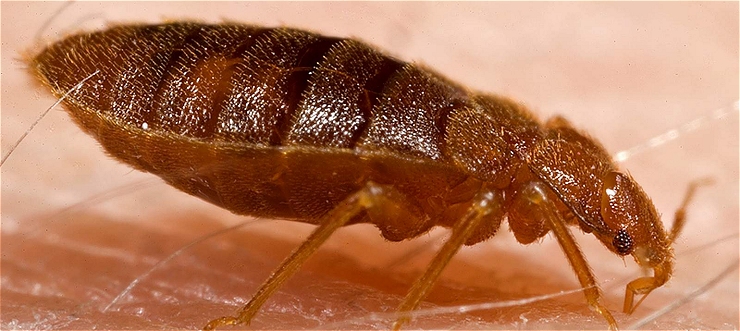
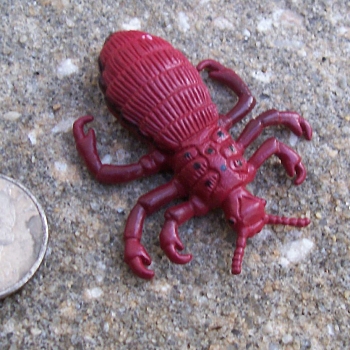
The only realistic bedbug I've seen in plastic.
These true bugs hide in nesting materials of
warm-blooded creatures (such as matresses)
and emerge at night to feed on blood.
These true bugs hide in nesting materials of
warm-blooded creatures (such as matresses)
and emerge at night to feed on blood.
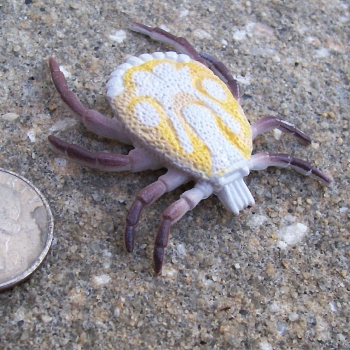
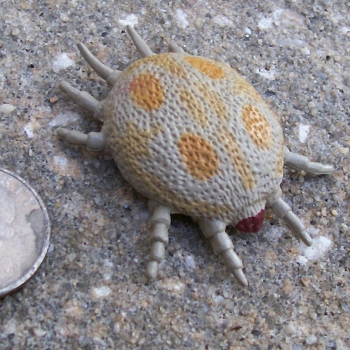
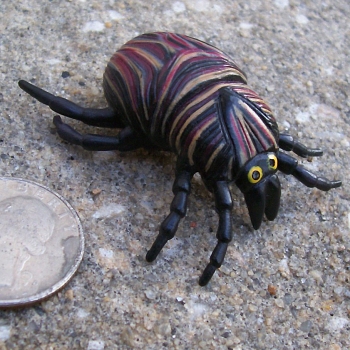
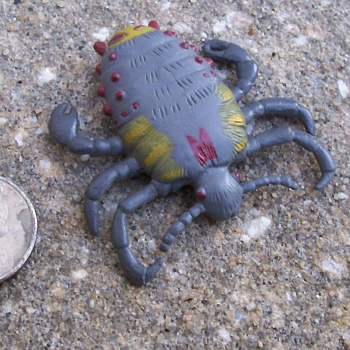
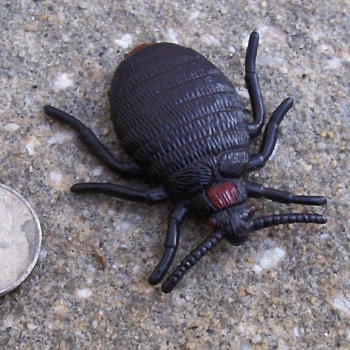
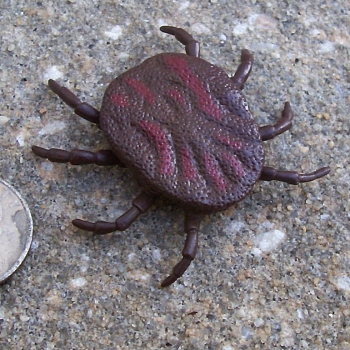
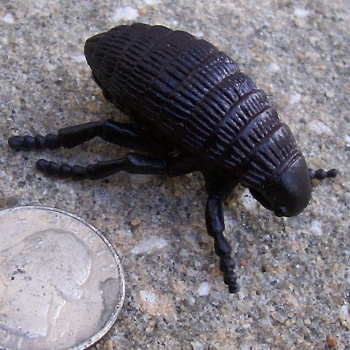
The underside of this figure says "chigger," but
it looks nothing like an actual chigger and
everything like a soft tick. Regardless, both are
arachnids in the subclass Acarina, the mites. Soft
ticks generally prey upon birds or bats.
it looks nothing like an actual chigger and
everything like a soft tick. Regardless, both are
arachnids in the subclass Acarina, the mites. Soft
ticks generally prey upon birds or bats.
Here we have the infamous "crab louse," the
only animal recognized as a sexually transmitted
disease. This species was originally a parasite of
gorillas, possibly transferred when ancient
humans hunted and fed upon the great apes.
only animal recognized as a sexually transmitted
disease. This species was originally a parasite of
gorillas, possibly transferred when ancient
humans hunted and fed upon the great apes.
Like their crabby cousins, head lice were once
adapted to the bodies of a non-human primate,
in this case the chimpanzee. With very different
hair on our heads and bodies, we humans are
the only mammal to host two different forms of
louse.
adapted to the bodies of a non-human primate,
in this case the chimpanzee. With very different
hair on our heads and bodies, we humans are
the only mammal to host two different forms of
louse.
One of my only toy fleas, which is sad, since fleas
are aesthetically my favorite insects. Once
considered an order all their own, the
Siphonaptera, recent studies suggest that fleas
are actually a very deviant group of scorpionflies.
are aesthetically my favorite insects. Once
considered an order all their own, the
Siphonaptera, recent studies suggest that fleas
are actually a very deviant group of scorpionflies.
This is labeled "deer tick," but the color and
pattern is entirely wrong. Regardless, this is a
figure of a "hard tick," which prefers the blood
of mammals and has a more exposed head than
the "soft ticks."
pattern is entirely wrong. Regardless, this is a
figure of a "hard tick," which prefers the blood
of mammals and has a more exposed head than
the "soft ticks."
One of my favorite bug toys, you couldn't ask for
a more accurate scabies or "mange" mite. These
nasty little beasts dig tunnels through the skin of
their hosts, leaving behind a trail of eggs and
feces, the source of the itch and hair loss.
a more accurate scabies or "mange" mite. These
nasty little beasts dig tunnels through the skin of
their hosts, leaving behind a trail of eggs and
feces, the source of the itch and hair loss.
This is labeled "dust mite" and a part of the
parasites set, but dust mites are in no way
parasitic. They are also eyeless and colorless,
but it seems the manufacturer decided to
improve where evolution left off.
parasites set, but dust mites are in no way
parasitic. They are also eyeless and colorless,
but it seems the manufacturer decided to
improve where evolution left off.
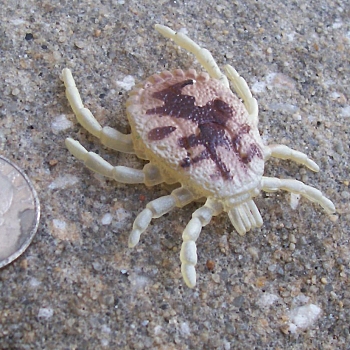
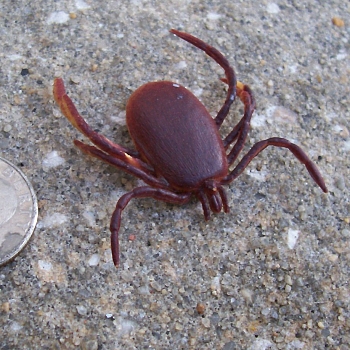
This is cast from the same mold as the phony
"deer tick" above, but in a more pleasing color
scheme and squishy, translucent rubber with a
suction-cup underbelly. It came in a bag of
various other suction-cup animals, even a bat.
"deer tick" above, but in a more pleasing color
scheme and squishy, translucent rubber with a
suction-cup underbelly. It came in a bag of
various other suction-cup animals, even a bat.
This tick came in a blister-pack with various
spiders and beetles. I've actually had this since I
was seven years old. Incidentally, ticks are the
only animal that I fear encountering in person,
which borders on an out-of-control phobia :)
spiders and beetles. I've actually had this since I
was seven years old. Incidentally, ticks are the
only animal that I fear encountering in person,
which borders on an out-of-control phobia :)
| Parasites from the "Museum Quality Replica" Collection: |
| Parasites from other sets: |
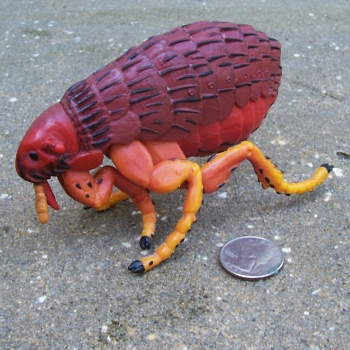
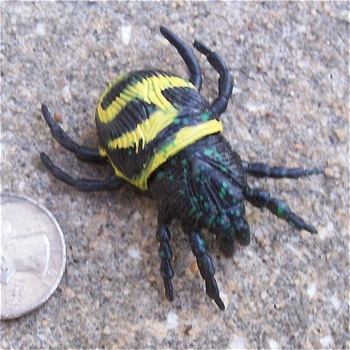
My only other toy flea, and a favorite overall
possession! I got this from the Smithsonian
Natural History Museum back in early grade
school. The colors really bring out the lifelike
details of this armored bloodsucker!
possession! I got this from the Smithsonian
Natural History Museum back in early grade
school. The colors really bring out the lifelike
details of this armored bloodsucker!
Another soft-rubber repaint with a suction cup,
this mite accurately lacks eyes but is no less
garish.
this mite accurately lacks eyes but is no less
garish.
"Pulverlice" is one of the Real Squish Bugs, a
toy line of rather questionable ethics, but a very
cool collection of exaggerated, grotesque
insects and arachnids! I love how this one gives
a perfectly louse-like impression without looking
much like the real thing.
toy line of rather questionable ethics, but a very
cool collection of exaggerated, grotesque
insects and arachnids! I love how this one gives
a perfectly louse-like impression without looking
much like the real thing.
